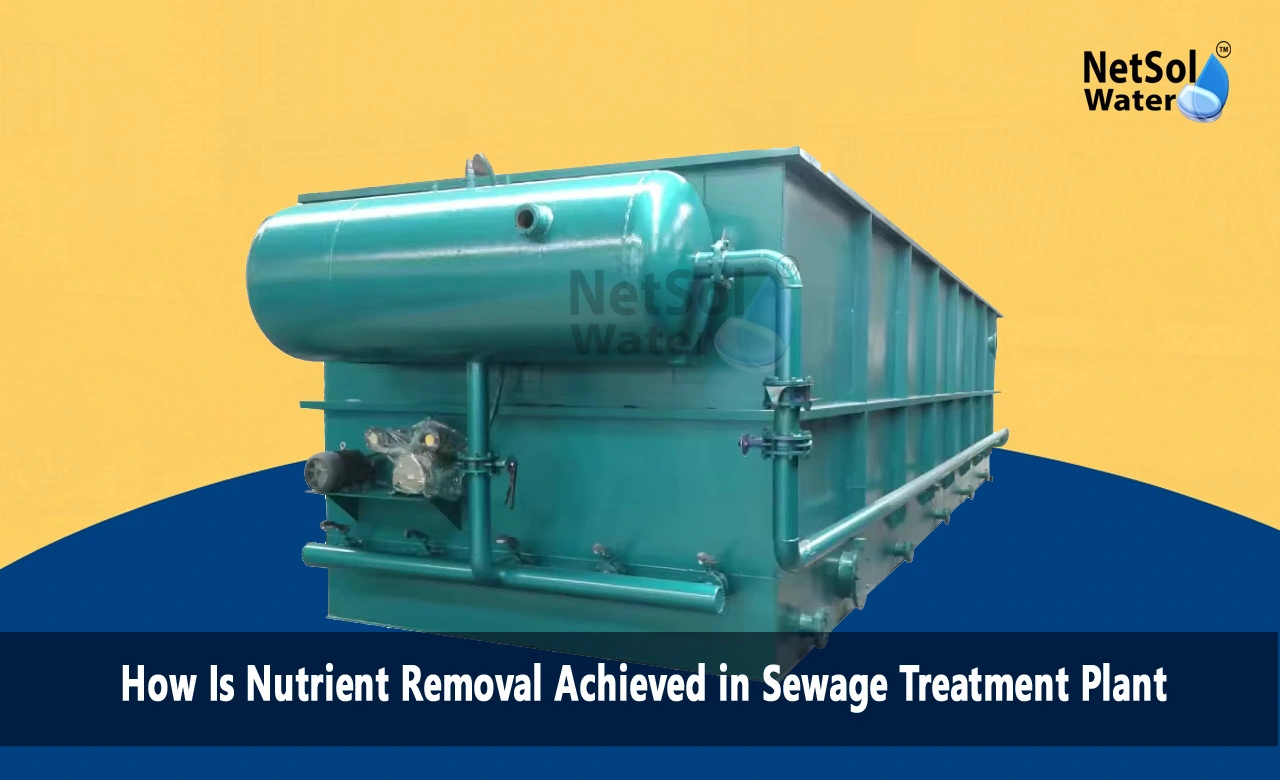How Is Nutrient Removal Achieved in STP Plant?
Treating sewage is important to make sure wastewater from homes, businesses, and towns is safely taken care of. One key part of this is getting rid of nutrients, which helps keep our water clean and our ecosystems healthy. We'll look into how sewage treatment plants remove nutrients and keep our waterways safe.
Learning the Importance of Nutrient Removal
Nutrients such as nitrogen and phosphorus are super important for plants and keeping ecosystems healthy. But too much of these nutrients in our water can cause big problems like eutrophication, algae overgrowth, and oxygen loss, which causes disbalance of ecosystems and harm water quality. That's why it's crucial to remove these nutrients effectively to protect our water and keep aquatic environments safe.
Understanding the Sources of Nutrient Pollution
Nutrient pollution in sewage is primarilydue to various human activities like dumping household wastewater, runoff from farms, and waste from factories. These activities add lots of nitrogen and phosphorus to our water, which makes algae and other water plants grow faster. Knowing where these pollutants come from is key to making sure sewage treatment plants can remove them effectively.
Nutrient Removal Processes
Sewage treatment plants employ various processes to remove nutrients from wastewater effectively. These processes include:
Biological Nutrient Removal Processes
Biological nutrient removal methods are commonly used in sewage treatment to get rid of nitrogen and phosphorus from wastewater. They work by using different tiny organisms to change and take out these nutrients.
Nitrification and Denitrification: Nitrification is when certain bacteria change ammonia into nitrites and then nitrates when there's oxygen around. After that, denitrification happens, where other bacteria turn nitrates into nitrogen gas, which goes into the air. This two-step process is a good way to take nitrogen out of the wastewater.
Enhanced Biological Phosphorus Removal (EBPR): EBPR, or Enhanced Biological Phosphorus Removal, is a common method for getting rid of phosphorus from sewage. It works by creating special conditions where certain bacteria, called polyphosphate-accumulating organisms (PAOs), can absorb and store extra phosphorus in their cells. These bacteria are then taken out of the wastewater through processes like sedimentation or filtration, which helps to effectively remove the phosphorus.
Combined Nutrient Removal: In many sewage treatment plants, nitrification, denitrification and EBPR processes are combined into a single system to achieve efficient removal of both nitrogen and phosphorus. This approach often involves creating alternating aerobic (with oxygen) and anoxic (without oxygen) conditions to support the different bacterial processes.
Chemical Nutrient Removal Processes
Apart from biological processes, chemical nutrient removal methods are also used in sewage treatment plants to aid in the removal of nitrogen and phosphorus.
Chemical Precipitation: Chemical precipitation is a widely used way to take phosphorus out of wastewater. It works by adding certain chemicalslike iron or aluminum salts, which mix with the dissolved phosphates and make solid particles. These particles can then be taken out of the wastewater through settling or filtering.
Ion Exchange: Ion exchange is another effective technique for eliminating nutrients, particularly ammonia and nitrates, which are forms of nitrogen. The wastewater passes through a unique resin that catches up these nutrients. Afterwards, the resin can be purified and reused thus allowing the gathered nutrients to be reclaimed and repurposed.
Chemical Oxidation: Chemical oxidation processes like chlorine or ozone can change ammonia into nitrates, which can then be taken out through biological denitrification or other methods. This helps make sure that harmful substances are removed from water during the treatment process.
Tertiary Treatment and Nutrient Recovery
In more advanced sewage treatment plants, they add extra steps called tertiary treatment to make sure they remove even more nutrients from the wastewater. Sometimes, they can even collect valuable nutrients from the water that could be used again. This helps make the treatment process more thorough and environmentally friendly.
Membrane Filtration: Technologies like reverse osmosis or nanofiltration, which use special filters, can take out lots of different contaminants from wastewater, including nutrients like nitrogen and phosphorus. These filters separate the nutrients from the water, making it possible to potentially get them back and use them again.
Nutrient Recovery: As people worry more about not having enough resources and being eco-friendly, there's more focus on getting back and using nutrients from sewage treatment. Methods like struvite precipitation and ammonia stripping can help get phosphorus and nitrogen back from wastewater. Then, these nutrients can be used as fertilizers or in industries, which helps create a circular economy where resources are reused instead of wasted.
Conclusion
Removingextra nutrients from sewage is important to keep our water safe and the environment balanced. Sewage treatment plants use both living things like tiny organisms and chemicals to get rid of too much nitrogen and phosphorus in wastewater before it goes back into the environment.
Microorganisms play a big role by breaking down and removing these nutrients in a process called biological nutrient removal. Chemical methods also help by targeting specific types of nutrients to make sure they're removed efficiently. Together, these methods help make sewage treatment more effective at cleaning up our water.
Some high-tech methods, like membrane filtration, can take out even more nutrients from sewage. And as we start to care more about saving resources and being eco-friendly, there's a growing interest in getting back useful nutrients from sewage for things like fertilizers.
Taking out extra nutrients from sewage doesn't just help protect water habitats; it also keeps our water clean and might even give us useful resources back. As technology gets better and we become more concerned about the environment, sewage treatment plants will continue to be really important for keeping our water safe and sustainable.
Do you need an advice or assistance on selecting the best water and waste water treatment unit? We have solutions for all your problems!
Let us now your problem, our experts will make sure that it goes away.
For an assistance or related query,
Call on +91-965-060-8473 Or write us at enquiry@netsolwater.com



